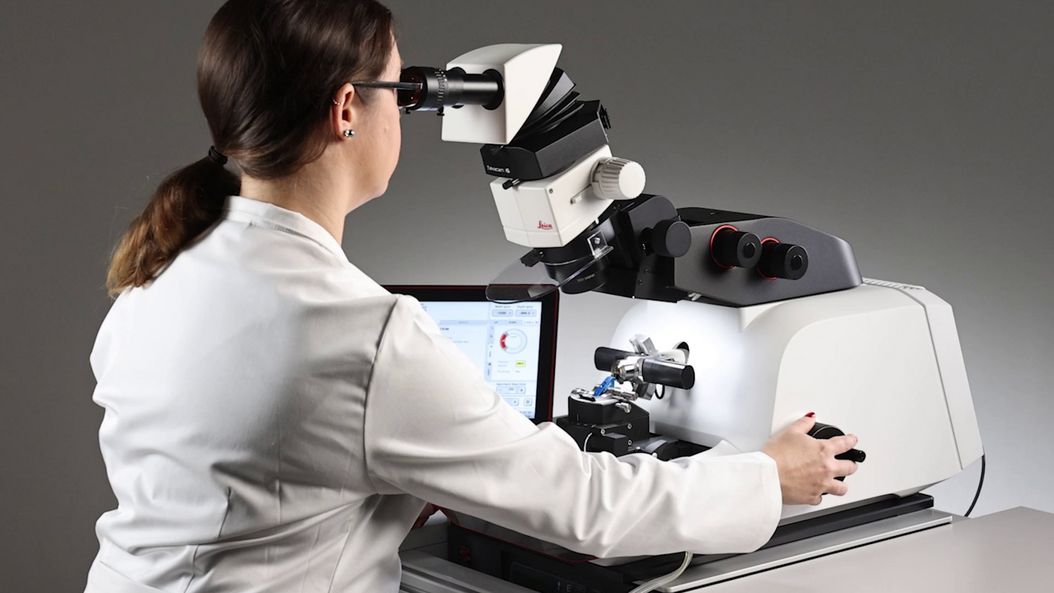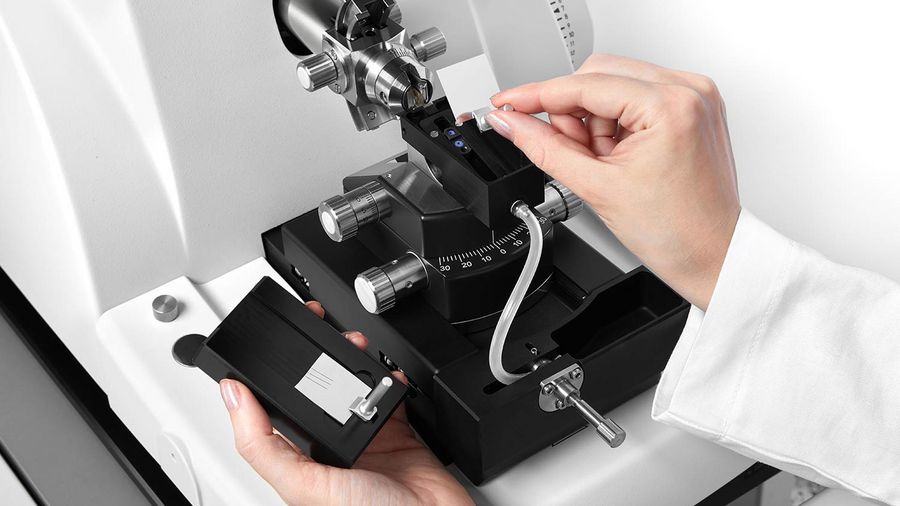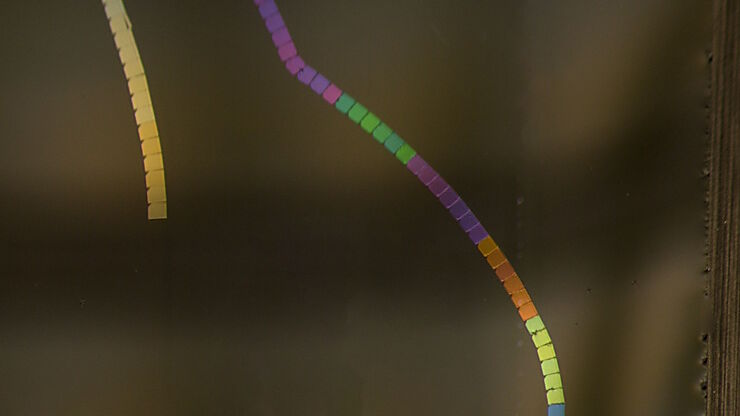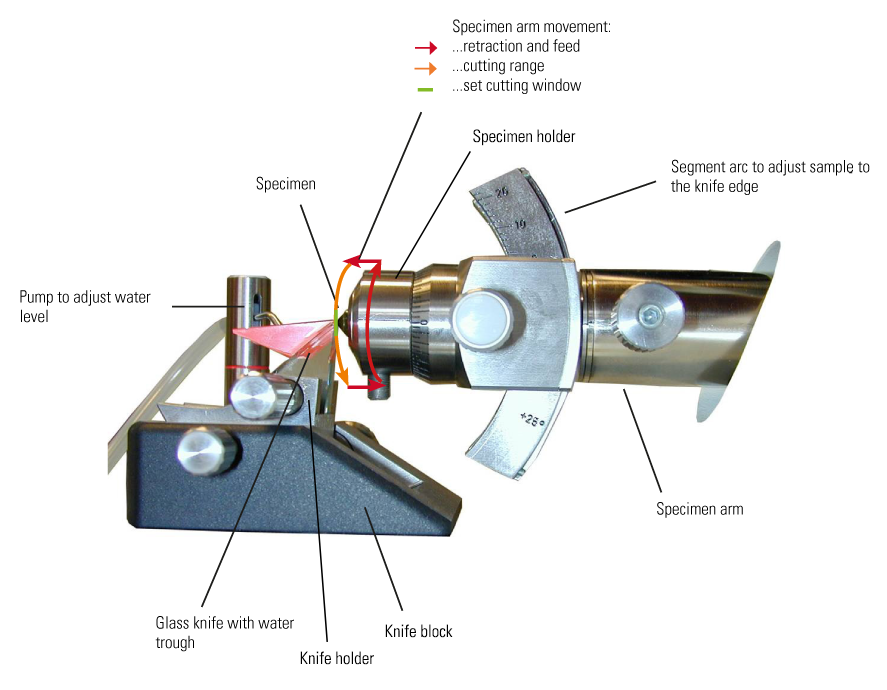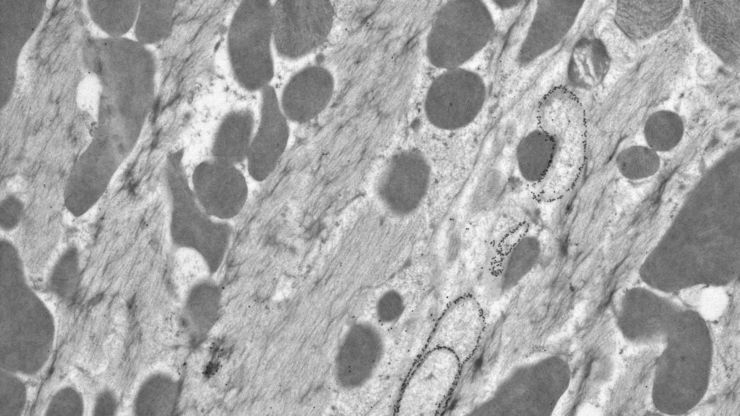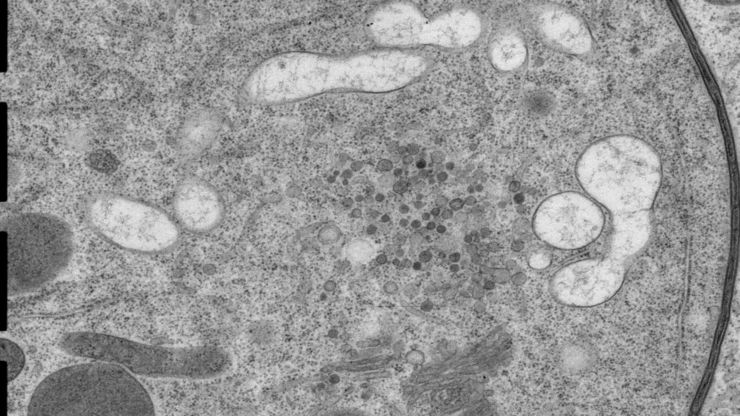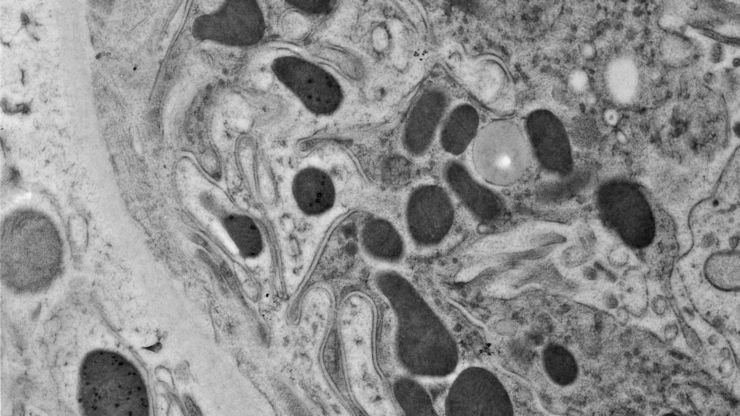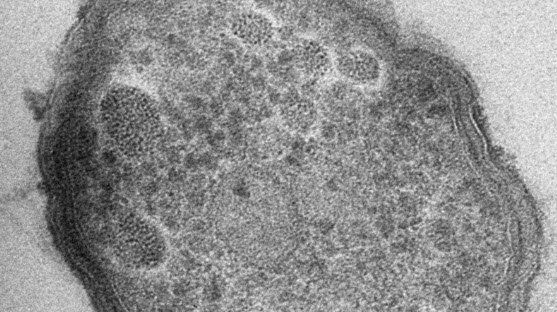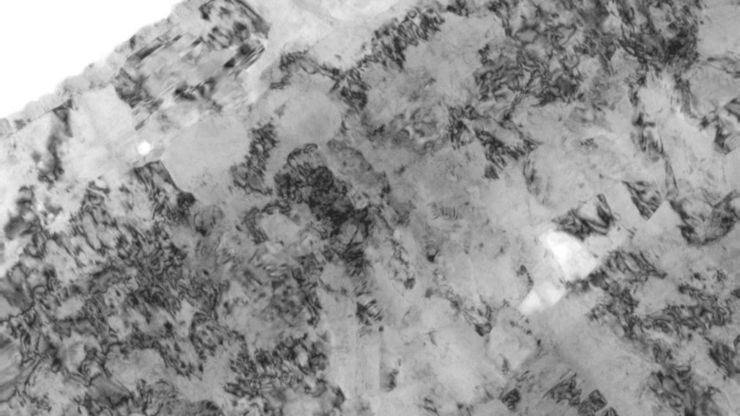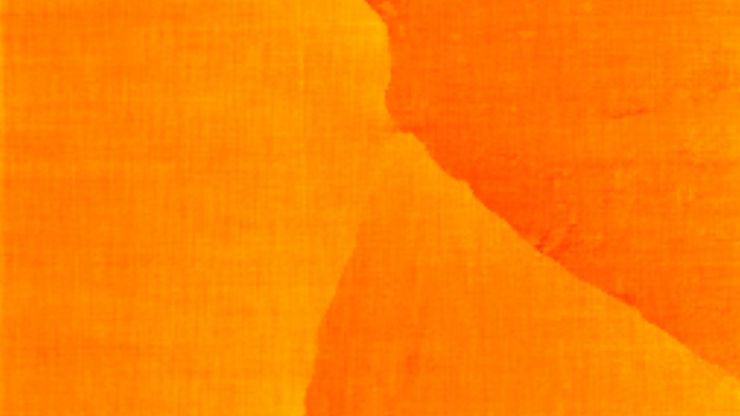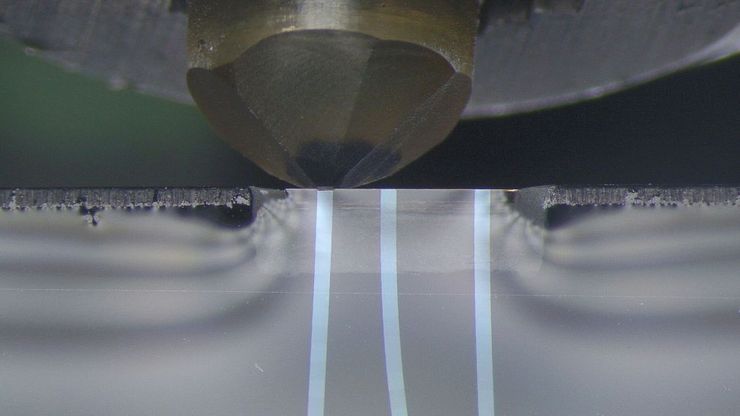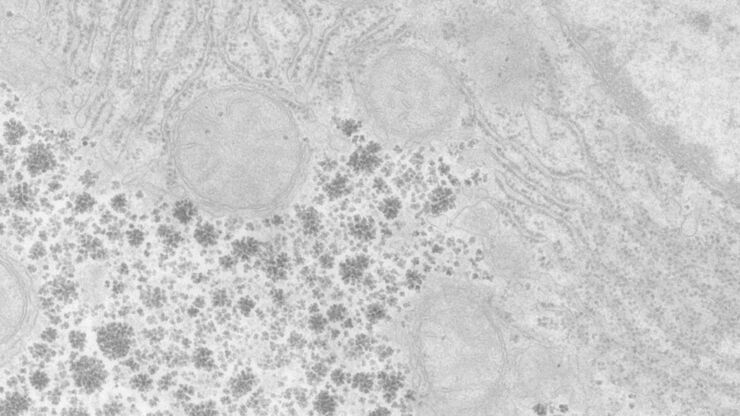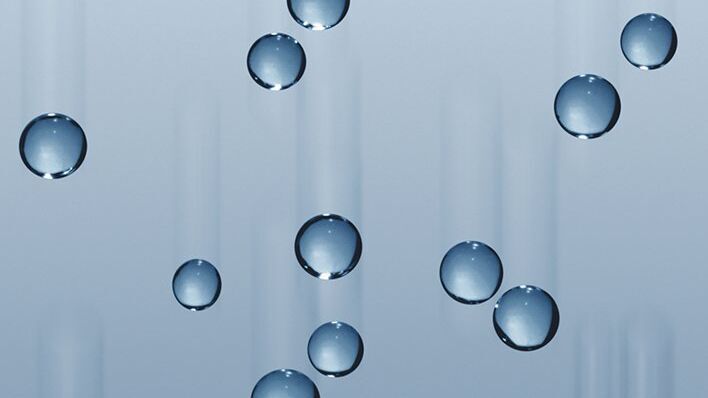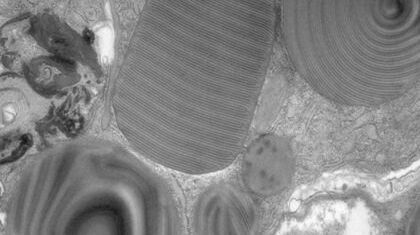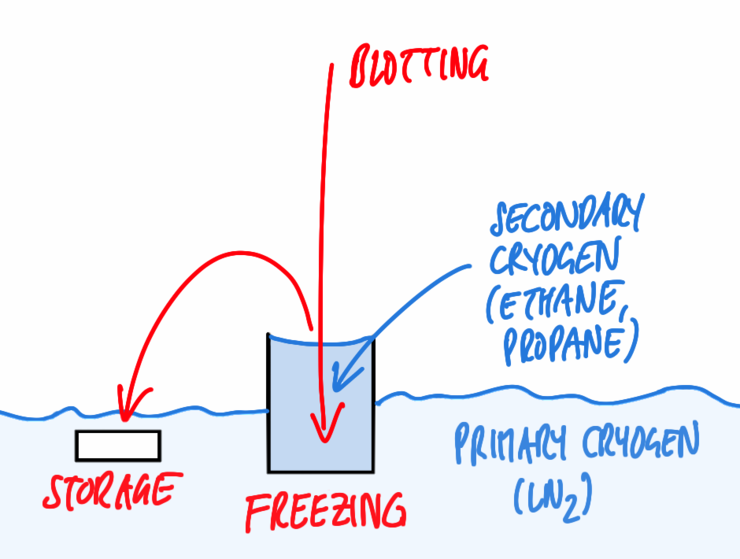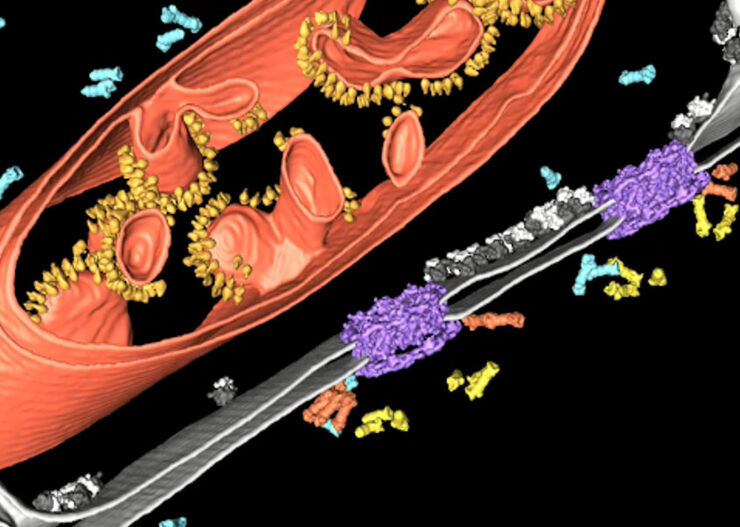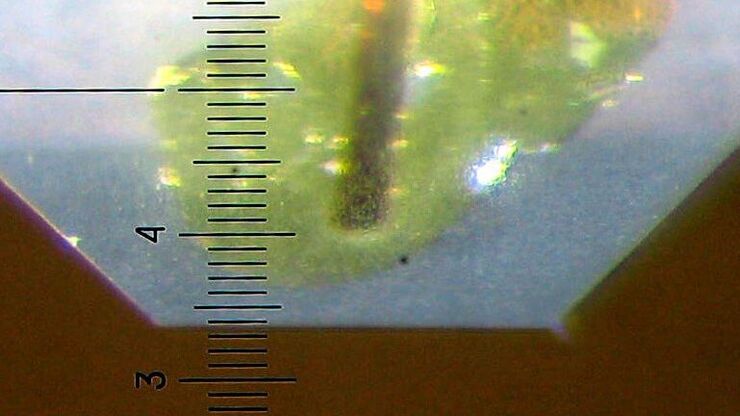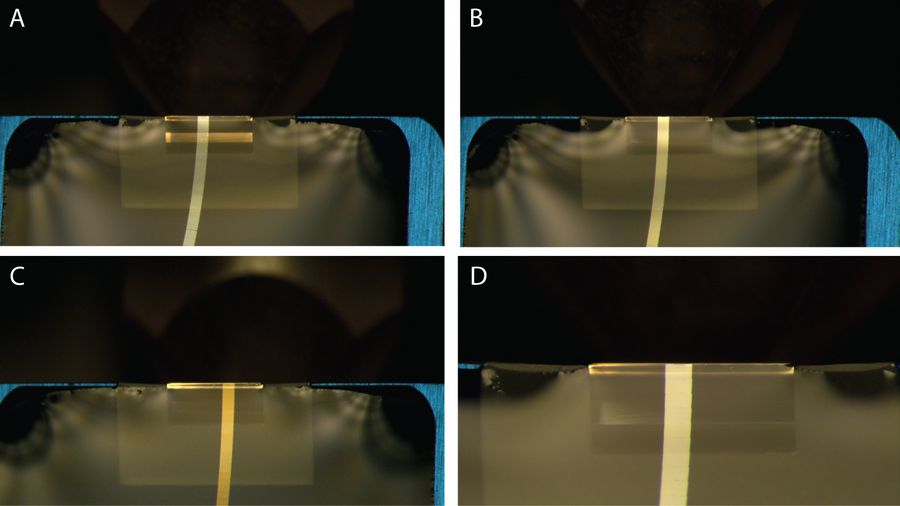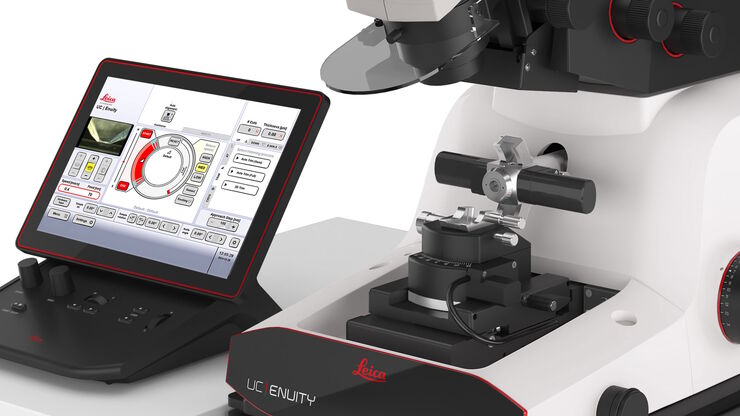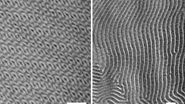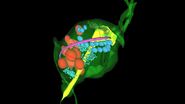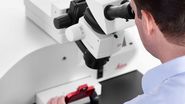Array tomography
Array tomography (AT) is a high resolution, 3D image reconstruction method for cellular structure analysis. It is performed using scanning electron microscopy (SEM) or light microscopy (LM) imaging of ordered arrays of ultrathin, resin-embedded serial sections. AT allows quantitative, volumetric structural analysis and visualization of cellular structures. It has better lateral and spatial resolution than conventional confocal microscopy. In addition, a higher throughput can be achieved by partially automated examination of bio-specimens.
Related articles
High Resolution Array Tomography with Automated Serial Sectioning
Automatic Alignment of Sample and Knife for High Sectioning Quality
High Quality Sectioning in Ultramicrotomy
Principle of ultrathin sectioning
For TEM observations, as well as for optimal 3D reconstructions with array tomography, ultrathin, ordered sections are a pre-requisite. An ultramicrotome, like the UC Enuity from Leica Microsystems, can produce such ultrathin sample sections (20 to 150 nm thick).
To form an image of a specimen in the transmission electron microscope, electrons have to penetrate the sample without any major loss in speed. A sample’s permeability to electron radiation depends partly on its mass and thickness (thickness × density) and partly on the acceleration voltage of the electron microscope. The electrons absorbed by the specimen can cause a build-up of heat and, thus, the formation of artifacts in the object.
When sectioning with an ultramicrotome, the sample is inserted into an arm, mounted on special bearings, which performs a motorized vertical cutting movement. After the section has been cut and the specimen arm retracted, an extremely precise electromechanical feed moves the sample slightly forward by a set distance corresponding to the desired section thickness. The sectioning is performed by a vertical movement of the specimen over the extremely sharp blade of a fixed glass or diamond knife. Removing the sections directly from the knife blade is difficult, because they are so thin. They are, therefore, collected from the surface of the water bath (or with the help of a micromanipulator for the case of cryo-sectioning) after the sectioning procedure. Any further preparation can then be done that may be needed before examination with electron microscopy (EM).
Related articles
Integrated Serial Sectioning and Cryo-EM Workflows for 3D Biological Imaging
Ultramicrotomy Techniques for Materials Sectioning
High Quality Sectioning in Ultramicrotomy
Perusing Alternatives for Automated Staining of TEM Thin Sections
Brief Introduction to Glass Knifemaking for Electron and Light Microscope Applications
Brief Introduction to Contrasting for EM Sample Preparation
Specimen preparation for array tomography
To prepare soft biological specimens for AT, several steps are required. These steps include:
- Tissue fixation
- Specimen extraction and resin embedding
- Serial sectioning and section ribbon collection, forming a section array
- Staining of sections for imaging, if needed.
Then the section array is imaged with SEM or LM (often fluorescence). Afterwards, the section images from the array are merged together for 3D image reconstruction and analysis.
With many ultramicrotomes, AT sample preparation has several time-consuming and cumbersome manual steps. An advanced ultramicrotome, such as the advanced UC Enuity ultramicrotome from Leica Microsystems can speed up the preparation process by automating specimen sectioning and minimizing the time required to align the sections for SEM or LM imaging.
For more information about ultramicrotomy and array tomography, please refer to the related articles shown below.
Related articles
Immersion Freezing for Cryo-Transmission Electron Microscopy: Fundamentals
Improve Cryo Electron Tomography Workflow
Brief Introduction to Specimen Trimming
High Quality Sectioning in Ultramicrotomy
Ultramicrotomy & Cryo-Ultramicrotomy
Whether tissue sample, polymer, rubber, metals or nanoparticles, Leica ultramicrotomes provide extremely thin sections and perfect surface quality in a wide range of applications. From materials science to cancer research, our ultramicrotomes are used for many different kinds of research and quality control all over the world.
No-compromise ergonomics
Users often operate an ultramicrotome for a long period of time. Therefore, fatigue-free operation is a must for both right- and left- handed users. Ergonomic arm rests and generous adjustment options make working with ultramicrotomes from Leica Microsystems more comfortable.
Nanometer precision
Leica ultramicrotomes guarantee precision and comfort. Thanks to the fully motorized knife stages and a wealth of technical features, even beginners can prepare perfect sections. Make perfect glass knives for perfect ultrathin sections with the EM KMR3 within minutes.
The instruments produce section thicknesses between 10 nm up to 15 µm. Discover the precision mechanics of Leica ultramicrotomes and enjoy highest quality specimen preparation for LM, TEM, SEM, or AFM examination.
Introduction: Importance and Benefits of Automation in Ultramicrotomy
Automation in ultramicrotomy is crucial for enhancing the precision, efficiency, and reliability of sample preparation. As scientific research demands increasingly detailed and accurate analyses, the need for advanced tools that can streamline and optimize the preparation process becomes more evident.
Automated systems reduce the reliance on manual interventions, which can be time-consuming and prone to errors. By integrating automation, researchers can achieve consistent, high-quality sections with minimal effort, allowing them to focus more on analysis and interpretation rather than the intricacies of sample preparation.
The state-of-the-art ultramicrotome UC Enuity offers you following advanced tools:
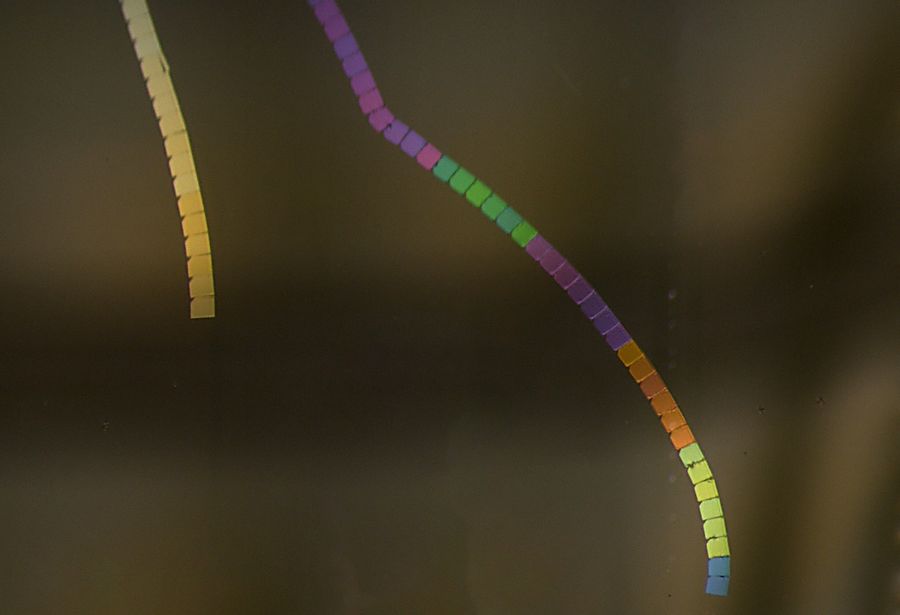
Automatic Knife Alignment
Automatic knife alignment ensures that the sample and knife are perfectly positioned in relation to each other reducing the need for manual adjustments. This saves time and minimizes errors, ensuring consistent and high-quality sections, even for unexperienced users.
Automatic Trimming
Automatic trimming allows samples to be quickly and efficiently trimmed to a specific block face size. This simplifies the preparation of samples for sectioning and significantly reduces the workload.
Trimming with the help of fluorescence
UC Enuity can be equipped with a motorized fluorescence stereo microscope. With the help of in-resin-fluorescence cells, tissue and other fluorescent specimens can be obtained automatically in a block face. Futhermore, using fluorescence the presence of the target in the sections can be proven during sectioning.
Target plane trimming using 3D Micro-Computed Tomography data (µCT)
Target trimming enables fast and precise trimming towards a target plane in the embedded sample without the need to create, transfer and check semithin sections during the approach of the target. This feature improves the efficiency of sample preparation and reduces time to result.
3D µCT data can be loaded into the UC Enuity's software workflow to define the target plane interactively. UC Enuity automatically configures knife and sample and automatically approaches the plane of interest.
Automation for volume EM
UC Enuity provides a specific serial sectioning knife, that can be aligned automatically to the block face of the sample. Together with the software workflow users are supported to perform serial sectioning with higher reliability and efficiency.
These innovative techniques make the UC Enuity an indispensable tool for modern research laboratories, helping to maximize the efficiency and accuracy of scientific work.
Related articles
Improve Your Ultramicrotomy Workflow with Automated Sectioning
Frequently asked questions Ultramicrotomy
Ultramicrotomes offer several advantages, making them essential tools for high-resolution imaging in various scientific fields. They produce ultra-thin sections, typically between 20 and 150 nanometers thick, which allow for detailed visualization of internal structures at nanometer scale resolution. Another significant advantage is the versatility of ultramicrotomes. They can be used to prepare sections from a wide range of materials, including biological specimens, polymers, metals, and ceramics. Furthermore, the process of ultramicrotomy is relatively fast and efficient, producing clean sections with minimal artifacts. This efficiency is beneficial for researchers who need to prepare multiple samples quickly.
Cutting ultrathin sections using an ultramicrotome involves several precise steps (typical steps for room temperature applications are explained in the following). First, the sample has to be fixed, dehydrated and embedded in resin to provide mechanicyl support. Then the sample is trimmed to expose a flat, smooth block face. After mounting the trimmed block onto the ultramicrotome, the block face is sectioned perpendicularly to the knife edge. Sections are typically collected in a water boat for facilitated pick up on a TEM grid.
In ultramicrotomy, glass knifes and diamond knives are use. In particular diamond knives are commonly used due to their exceptional sharpness and durability.
- Types: There are various types of diamond knives designed for different applications, including standard ultramicrotomy, cryo ultramicrotomy (wet and dry), and material science
- Angles: Diamond knives come in different angles, typically 35°, 45°, and 55°, to suit various sectioning needs.
- Sizes: The diamond edge lengths can range from 1 to 7 mm, depending on the specific requirements
A cryo ultramicrotome is a specialized type of ultramicrotome designed to cut ultra-thin sections of specimens at very low temperatures, typically between -20°C and -150°C. It is particularly useful for preparing frozen biological specimens. Cryo ultramicrotomy helps to preserve the native structure and composition of biological samples, which otherwise can be altered by chemical fixation and dehydration.
While ultramicrotomes are invaluable for preparing ultra-thin sections for transmission electron microscopy (TEM), they do have some disadvantages:
- Complexity: Operating an ultramicrotome requires specialized training and expertise, which can be overcome by automated approaches.
- Time-Consuming: The preparation process of samples can be very time-consuming
- Sample Damage: There is a risk of damaging delicate samples during sectioning.
- Limited Sample Size: Only small samples can be sectioned, which may not be representative of the entire specimen.
Despite these challenges, the high-resolution imaging capabilities provided by ultramicrotomy make it an essential tool in many scientific fields.
The main difference between a microtome and an ultramicrotome lies in the thickness of the sections they produce and their applications: While the microtome is used to cut thin slices of biological tissues typically of a few micrometers for light microscopy, the ultramicrotome is designed to cut ultra-thin sections (50-100 nm thin) for transmission electron microscopy (TEM).
Ultramicrotomy is primarily used for preparing ultra-thin sections of specimens (50 -100 nm) for transmission electron microscopy (TEM). This technique allows scientists to visualize and analyze the internal fine structures of samples at nanometer scale resolution.

